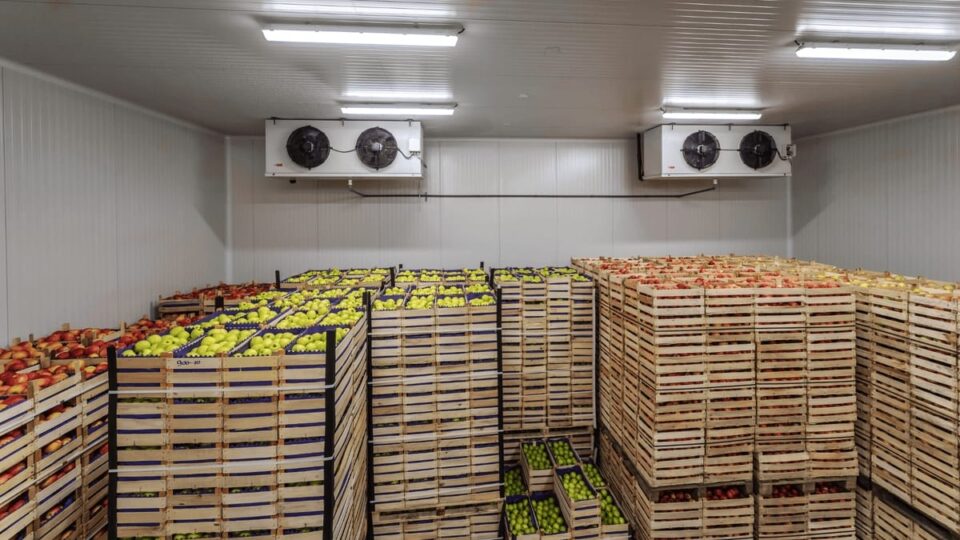Each year Australians waste around 7.6 million tonnes of food across the food supply chain – equalling around 312kg per person and costing around $2,500 per household per year. Preventing food waste is the key to promoting sustainability in the food industry.
Are you doing enough to keep your food storage units in optimal condition and prevent spoilage?
Keep reading to learn about the dry storage requirements in the food industry and how you can adhere to them for more sustainable practices.
What are the requirements for dry storage?
Standard 3.2.2 Food Safety Practices and General Requirements states that food businesses need to keep food stored in a way that keeps it safe and suitable. This includes keeping the storage unit dry and reducing humidity levels for some foods.
Humidity can spoil products and promote the growth of bacteria. Dry food storage includes an air-tight container and a tight lid to prevent insects and other pests from entering. Here are some of the best practices for adhering to air quality standards for food processing:
- Keep storage areas clean, dry, and pest-free.
- Use food-safe covers, containers, and packaging to protect food.
- Store potentially hazardous food at 5 degrees Celsius or colder – and check it with a thermometer.
- Stor raw food like meat or seafood separately nor below ready-to-eat foods to avoid contamination from meat juices etc.
- Make sure frozen food stays frozen hard.
- Check that food packaging is undamaged.
- Don’t store food in warm or humid areas or direct sunlight. This could spoil the food and make it unsafe.
- Store food, containers, and packaging off the ground and away from cleaners like chemicals and insect sprays.
Here are some of the specific humidity and ventilation requirements for your dry store:
- Temperature: keep your storeroom cool, dry, and well-ventilated. The ideal recommended temperature is between 10 and 15 degrees Celsius. Be wary of sunlight exposure, as this can increase the temperature in the store room.
- Humidity – storage areas within your facility should have a humidity below 15% to avoid dampness and spoilage.
- Sunlight – sunlight promotes oxidation, causing the food to lose nutritional value and quality over time.
- Vermin – to prevent insects and vermin from entering your storeroom, rodent and insect-proof all windows and doors. You should also keep entry points closed whenever possible.
Adhering to dry storage’s temperature and humidity requirements requires investment in ventilation solutions for temperature regulation and humidity expulsion. In the rest of this post, we will discuss the ideal ventilation solutions for food storage.
What are the top ventilation solutions for food storage?
Let’s explore the top ventilation solutions for managing humidity and temperature in a food storage unit.
Air curtains
Air curtains create a fast-moving wall of air across windows and doors in your food storage unit to separate indoor and outdoor environments. Here are the benefits they provide:
- Humidity and temperature management – air curtains prevent moist warm air from entering the unit while preventing cold air from escaping. They create a stable internal environment, preventing condensation and maintaining optimal storage conditions.
- Insect and contaminant control – air curtains provide a physical barrier, inhibiting insects, dust, and contaminants from entering the air within your dry storage unit. In food storage areas, pests can consume and contaminate your food. Keeping unwanted pests out makes your food more hygienic and high quality.
- Energy savings – air curtains create an invisible barrier without a physical door, reducing the frequency of door openings, which can lead to temperature fluctuations.

End wall exhaust fan
Here are the ways an end wall exhaust fan can benefit your dry storage unit:
- Regulating temperature – exhaust fans provide temperature regulation, exhausting hot air that rises to the top of the room during stratification. Heat won’t accumulate near the roof, and temperatures will remain consistent.
- Moisture control – an end wall exhaust fan expels any moisture in the air to create a dry storage environment, reducing the risk of food spoilage for more product integrity.
- Ait circulation – during stratification, hot air rises and cool air sinks. Exhaust fans provide air circulation to maintain uniform and regulated temperature levels throughout the space.

Centrifugal fan
Centrifugal fans work to promote successful dry food storage for the Australian food processing industry through:
- Temperature regulation – like exhaust fans, centrifugal fans provide air circulation to mix the air and prevent temperature stratification.
- Humidity control – the air circulation from a centrifugal fan helps regulate humidity by preventing moisture buildup in stagnant air pockets. This prevents mould, moisture-related damage, and product deterioration.
- Fresh air intake – a centrifugal fan brings in fresh air from the facility’s exterior, which reduces the concentration of ethylene gas (a common accelerant of fruit and vegetable ripening).

Use Fanquip ventilation to manage humidity in your dry stores
Adopting food processing ventilation solutions is the easiest way to control humidity in dry storage areas. Humidity and uneven temperature distribution will compromise product integrity and cause breakage of industry compliance.
Are you using ventilation to manage humidity for your dry stores? Contact Fanquip to speak to ventilation experts who can recommend the perfect fans and products for your facility’s needs.
